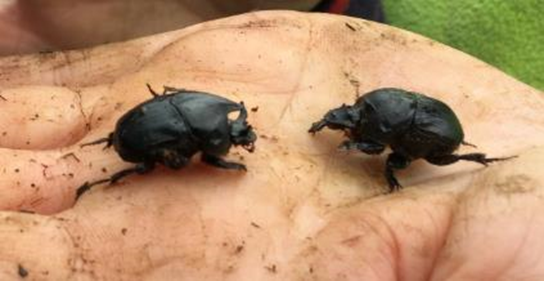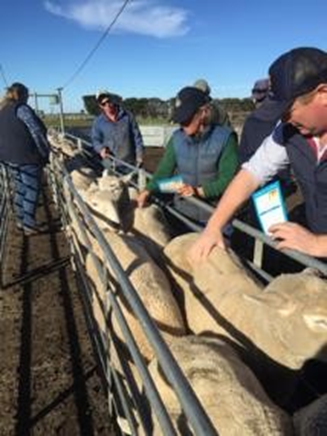Enhanced producer demonstration site program
Background
The Enhanced Producer Demonstration Site (EPDS) concept was developed in 2014 as a partnership between Meat & Livestock Australia (MLA) and Agriculture Victoria. The partnership brings the benefits of integrating with Agriculture Victoria’s BestWool/BestLamb and BetterBeef network of producers. Groups receive assistance from Agriculture Victoria extension staff throughout the demonstrations including monitoring, evaluation, reporting and communication.
This project comprised of two parts. Firstly, the completion of a suite of eight (phase one) demonstrations that commenced in 2014, and secondly, a further seven (phase two) demonstrations, established through an expression of interest (EOI) process that commenced in 2018–19.
Phase one
Phase one demonstrations involved 47 host producer sites and 276 group members. Sixty-six group events were held with 1,665 producers and 128 service providers attending. An evaluation was conducted three years after these demonstrations concluded and found that 84% of producers interviewed had made or were in the process of making practice changes to their farm business (many of them significant changes). Producers rated the demonstrations 8.7/10 for helping them to understand the management practice or technology.
Phase two
Phase two demonstrations involved 41 host producer sites and 254 group members. Sixty-two group activities and presentations were conducted with 1,042 producers and 163 service providers attending. Seventy-nine media articles and events promoted these demonstrations and their outcomes. Producer knowledge and skills increased across all demonstrations. High levels of adoption or intention to adopt practices was measured for all demonstrations except Adopting accelerated beef finishing systems using grazed fodder beet and Drones for monitoring sheep welfare. These projects identified issues and risks that prevented adoption.
EPDS phase two is now complete, the program final report and individual project reports will be published on the MLA website soon.
EPDS Phase two demonstrations
The project aimed to directly engage 100 beef and sheep producers through seven EPDS projects. These projects were aligned with key profit drivers, MLA and SALRC priorities through an EOI process, and were supported by regional SALRC committees.
The demonstration projects included:
- Adopting accelerated beef finishing systems using grazed fodder beet crops
- Using soil moisture probes to predict winter/spring pasture growth
- To wean or not to wean
- Annual grass control strategies in perennial pastures
- Using drones on farm to check sheep welfare
- Demonstrating the benefits of dung beetles to prime lamb producers
- Increasing lamb survival
Demonstration one: Adopting accelerated beef finishing systems using grazed fodder beet crops
The autumn/winter feed gap remains a real challenge for beef producers in the north-east and ppper Murray regions of Victoria. Many group members of the Mudgegonga and upper Murray Better Beef groups had seen fodder beet being used to fill a similar feed gap while on farm tours to Tasmania.
To assess the suitability of fodder beet for use on local farms, a series of demonstration crops were planted on three farms. Crop performance was monitored from germination through to grazing, with plant weight and numbers used to estimate crop biomass (t DM/ha).
Total dry matter (DM) production was then used to calculate cost of production. All three sites had low plant establishment rates (averaging 48,000 – well below the anticipated 85,000 plants per ha). Low plant densities coupled with low plant weights at two sites resulted in unprofitably low DM/ha – both sites were characterised by high amounts of summer weeds. One site performed better with greater plant weights driving higher yields. High establishment costs ($3,165/ha) made two of the three crops unprofitable. A 12.2 t DM/ha fodder beet crop was required to break even with a 6 t DM/ha millet crop.
Under the tested conditions, it is unlikely that fodder beet will play a meaningful role in filling the autumn/winter feed gap in the north-east/upper Murray regions of Victoria.
MLA PDS project site:
Adopting accelerated beef finishing systems using grazed fodder beet crops
Demonstration two: Using soil moisture probes to predict winter/spring pasture growth
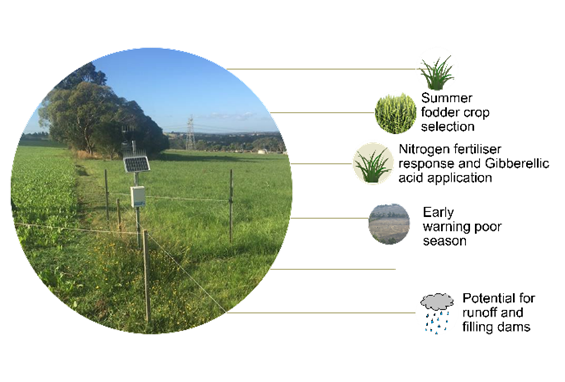 Soil moisture probes are gathering popularity in pasture paddocks across Victoria, albeit without clear understanding on the value in a grazing system. Research indicates that soil moisture at the beginning of spring can have a considerable impact on the pasture produced, which is utilised in software programs such AskBill (now Ag360), but this is not well known or utilised by producers. Early prediction of spring growth has the potential to help farmers make some early management decisions, particularly in the event of a poor spring.
Soil moisture probes are gathering popularity in pasture paddocks across Victoria, albeit without clear understanding on the value in a grazing system. Research indicates that soil moisture at the beginning of spring can have a considerable impact on the pasture produced, which is utilised in software programs such AskBill (now Ag360), but this is not well known or utilised by producers. Early prediction of spring growth has the potential to help farmers make some early management decisions, particularly in the event of a poor spring.
Pasture cages were installed on four trial sites that had soil moisture probes, and cuts were taken over the late winter/spring period to estimate monthly pasture growth rates.
Predictions for the spring period were produced using actual soil moisture at each site from 2019 to 2021. Regional climate forecasts were included in the predictions in 2020 and 2021. Actual growth rates were compared to the predictions to assess accuracy.
Demonstration sites experienced three good spring seasons, commencing with full soil moisture profiles in August/September, so all pasture predictions were for average or greater than average spring pasture production. Despite limited opportunity for farmer engagement over the project, most farmers involved felt predictions were realistic and that they could use soil probe data to make some early decisions in spring regarding stock sales, stocking rates, feed budgeting and pasture sowing decisions.
Benefits to industry include:
- an increased understanding and use of the soil moisture probe data
- an increase in confidence in pasture predictions
- interest by the wider advisory and service industry in the technology and hence an opportunity for wider uptake and extension in the future.
However, discussion and validation of pasture growth and predictions is critical for ongoing confidence and uptake.
There is currently no simple and robust predictive system for Victoria. Farming Forecaster is an example of such a tool with a dashboard but is currently only supported in some regions, depending on funding.
MLA PDS project site:
Using Soil Moisture probes to predict winter/spring pasture growth
Demonstration three: To wean or not to wean
The St Arnaud BestWool/BestLamb (BWBL) group investigated whether weaning their autumn drop prime lambs at 12 weeks of age would lead to production benefits or cause adverse effects to lamb weight gain. The demonstration compared weights of weaned and unweaned lambs across three farms in 2019 and 2020. At weaning, ewes and lambs were split into three mobs:
- Weaned lambs
- Unweaned ewes and lambs + weaned lambs
- Unweaned ewes and lambs + weaned ewes.
Lamb weights were measured at the time of weaning (12 weeks from start of lambing) and at sixteen weeks of age. Measurements were also taken at 22 weeks of age in year one and 21 weeks in year two.
The demonstration found little or no significant differences in the average weights of weaned and unweaned lambs by the time they were sold at 22 weeks of age. Additionally, abattoir data from one property showed no significant difference in hot carcase weights and lean meat yield between weaned and unweaned lambs. Participants found there were additional benefits to weaning lambs rather than leaving them on their mothers such as:
- managing spring pastures effectively
- allowing ewes to regain condition before summer
- greater flexibility in their lamb marketing strategy.
The information obtained from this demonstration project can be used to inform other producers across the region (and potentially other regions) that there are no penalties to weaning lambs.
MLA PDS project site:
Demonstration four: Annual grass control strategies in perennial pastures
Barley grass is a prolific weed. While it provides early season feed, the animal health concerns late in the season are a continuing problem for producers. The aim of this project was to demonstrate methods to reduce the reliance on chemical control by investigating other options such as mechanical removal, increased competition, and grazing management.
Perennial Pasture Systems (PPS) members already using barley grass control practices were targeted as site hosts and trials were set up on thirteen properties in the area. These trials were assessed for their effectiveness in barley grass control.
Success was demonstrated on sites where over sowing and weed control methods were used in combination, and where silage was made. The demonstration has provided useful information on the management of barley grass within the pasture system.
MLA PDS project site:
Annual grass control strategies in perennial pastures
Demonstration five: Using drones on farm to check sheep welfare
Are drones all they are cracked up to be? Can they save time and money monitoring sheep welfare? These are the sorts of questions the Boort BestWool/BestLamb (BWBL) group wanted to find out during the three-year ‘Using drones on-farm to monitor sheep welfare’ demonstration.
Using technology to save time and labour is an increasing area of interest for producers. As such, the Boort producers looked to measure the practical uses of a drone and identify if the labour requirements to check ewe welfare at lambing using a drone were more efficient than everyday practice. The usefulness of the drone was also assessed for other tasks at other times in the year.
More than 150 videos were recorded from three different drones across three lambing periods (2019, 2020, 2021) and two summer periods (2019, 2020). It was observed that sheep stayed calm when the drone was at a distance, or if approached slowly, it could be flown at lower heights between 10–15 metres. When the drone was travelling at speed at any height, the sheep tended to move away from it. The producers observed that this was due to the sound of the drone.
The trial identified items to consider when looking to purchase a drone and how best to fly it around sheep, information that was previously not available. Ag tech limitations affected the uptake of drones in this trial. However, the drones were found to undertake some tasks on-farm quickly and effectively, such as water trough checks, and they could be used to check ewe and lamb welfare at lambing if approached slowly.
MLA PDS project site:
Using drones on farm to check sheep welfare
Demonstration six: Demonstrating the benefits of dung beetles to prime lamb producers
Healthy soils and pastures are critical for a productive prime lamb operation. There is limited research on the use of dung beetles in sheep production systems. However, research in cattle systems suggests by burying and consuming dung, dung beetles improve nutrient cycling and soil structure, reduce pasture fouling, and increase pasture growth (Doube 2008).
The South West Prime Lamb Group (SWPLG) undertook dung beetle trapping in conjunction with the Dung Beetle Environmental Engineers (DBEE) project to investigate existing populations of dung beetles and their seasonal abundance. Trapping was performed for twelve months across eight properties (four per year for two years). Twelve species were found, including eight introduced and four native species. A noticeable gap in the abundance of introduced dung beetles was observed from late autumn, through winter, into early spring.
The project also demonstrated the impact of deep tunnelling Bubas bison on soil fertility. Trials showed that dung beetles were mobilising nutrients and increasing soil fertility to depths of 10–30 and 30–60cm. Plant roots and earthworms were observed to be travelling down dung filled tunnels.
The project highlighted the benefits of dung beetles for prime lamb systems and opportunities to value add to these benefits by filling seasonal gaps in abundance.
MLA PDS project site:
Demonstrating the benefits of dung beetles to prime lamb producers
Demonstration seven: Increasing lamb survival
Increasing lamb survival rates is a high priority for the sheep industry providing both economic and welfare benefits. The Western Plains BestWool/BestLamb (BWBL) group identified lamb survival as a high priority and were keen to implement the outcomes of recent research findings and measure the impact on twin lamb survival in their environment. The group of sheep producers identified three key strategies that they wanted to put to the test which included, mob size, shelter and ewe condition.
Mob-size trials conducted over three years demonstrated that smaller mobs, averaging 45 ewes had greater lamb survival (86–90%) than larger mobs averaging 113 (82–83%). In the final year of the project, a second property measured a 7% higher lamb survival in the smaller mob of 64 ewes (77% lamb survival) compared to the larger mob of 100 ewes (70% survival).
A shelter trial conducted in 2021 achieved a 10% higher lamb survival in a more sheltered paddock, with rushes and additional shelterbelts than the less sheltered paddock (82% compared to 70%).
Ewe condition trials demonstrated that ewes in higher condition score (3.5) prior to lambing produced more lambs than ewes in lower condition (2.8). Increases in lamb survival ranged from 6% to 29% for the higher condition score mobs.
Group members gained skills and experience through:
- group condition scoring activities
- paddock walks assessing feed on offer
- temporary electric fencing demonstration to divide up paddocks for smaller lambing mobs
- lamb autopsy workshop.
An evaluation with group members showed improvements in knowledge, attitude and skills of all parameters measured. The Western Plains BWBL group members are now implementing changes around ewe mob size, managing ewe condition and better use of shelter for twin-bearing ewes.
MLA PDS project site:

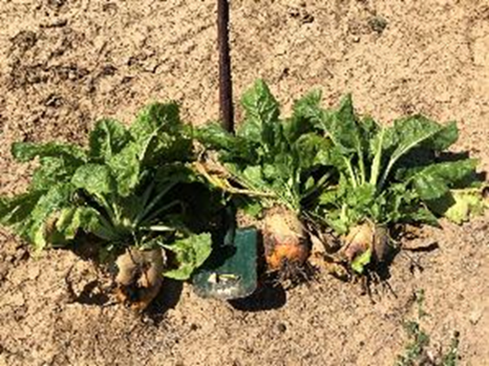
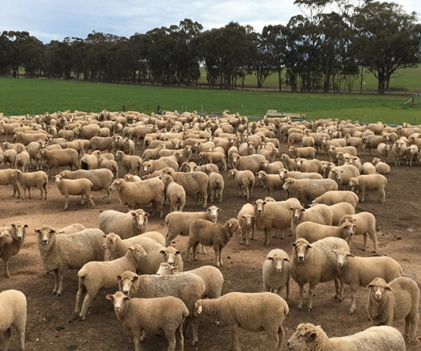 weaning their autumn drop prime lambs at 12 weeks of age would lead to production benefits or cause adverse effects to lamb weight gain. The demonstration compared weights of weaned and unweaned lambs across three farms in 2019 and 2020. At weaning, ewes and lambs were split into three mobs:
weaning their autumn drop prime lambs at 12 weeks of age would lead to production benefits or cause adverse effects to lamb weight gain. The demonstration compared weights of weaned and unweaned lambs across three farms in 2019 and 2020. At weaning, ewes and lambs were split into three mobs: 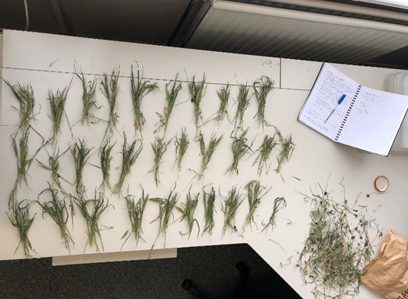 Barley grass is a prolific weed. While it provides early season feed, the animal health concerns late in the season are a continuing problem for producers. The aim of this project was to demonstrate methods to reduce the reliance on chemical control by investigating other options such as mechanical removal, increased competition, and grazing management.
Barley grass is a prolific weed. While it provides early season feed, the animal health concerns late in the season are a continuing problem for producers. The aim of this project was to demonstrate methods to reduce the reliance on chemical control by investigating other options such as mechanical removal, increased competition, and grazing management. 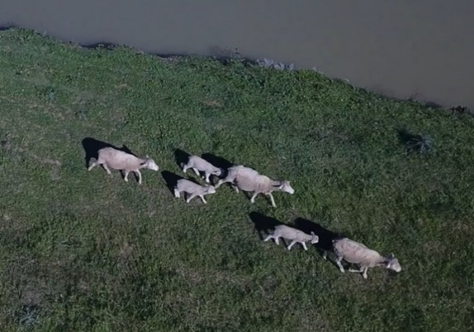 monitoring sheep welfare? These are the sorts of questions the Boort BestWool/BestLamb (BWBL) group wanted to find out during the three-year ‘Using drones on-farm to monitor sheep welfare’ demonstration.
monitoring sheep welfare? These are the sorts of questions the Boort BestWool/BestLamb (BWBL) group wanted to find out during the three-year ‘Using drones on-farm to monitor sheep welfare’ demonstration. 